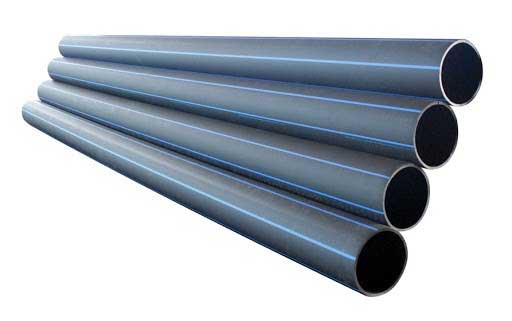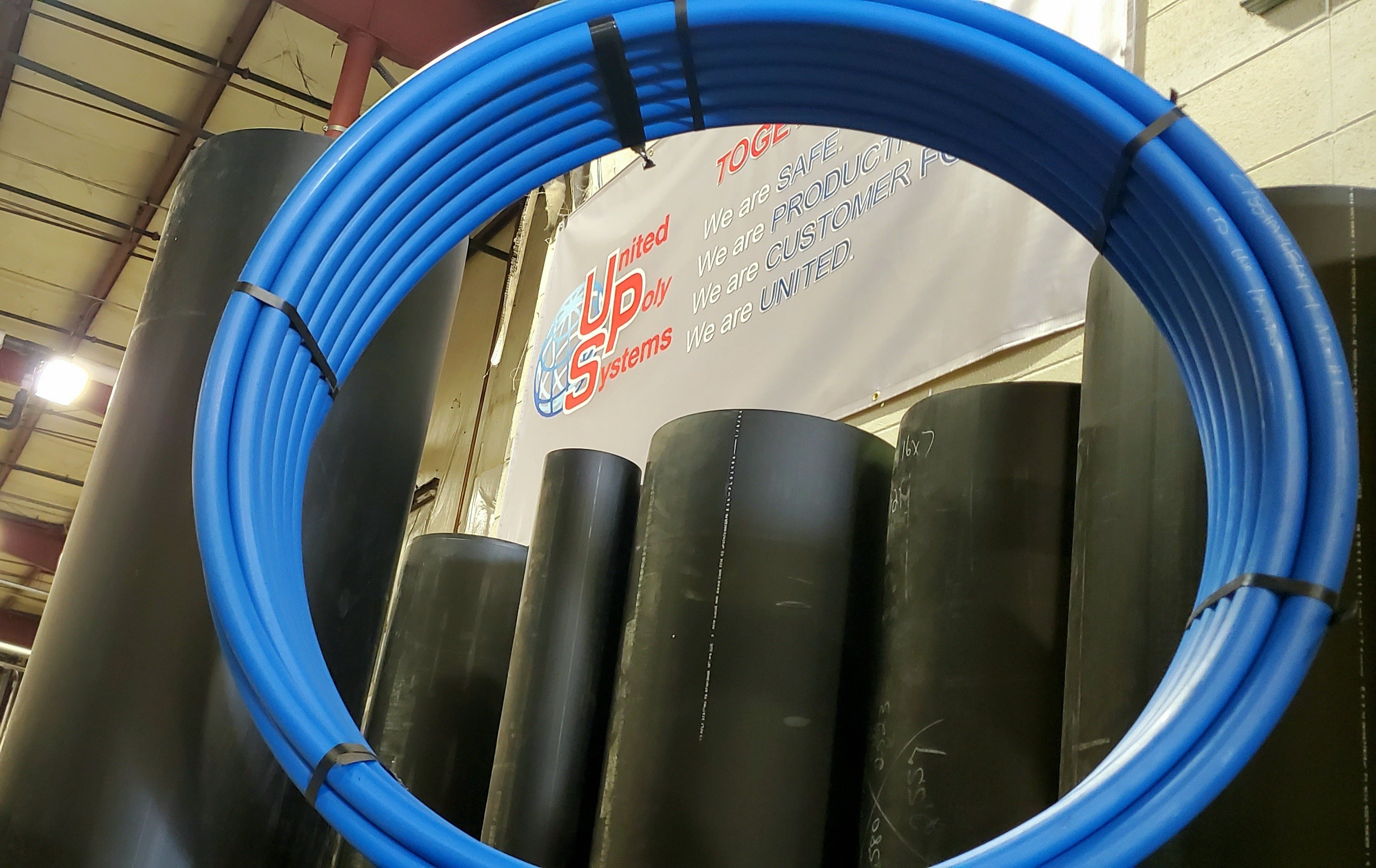The Definitive Handbook to Pipe Manufacturing Midland TX for Energy Projects
Wiki Article
Discover the Manufacturing Refine Behind High-Quality HDPE Pipe and Its Applications
The manufacturing process of top notch HDPE pipes is elaborate and systematic. It begins with the choice of resources that boost performance. Following this, ethylene undertakes polymerization to form material, which is after that formed via extrusion. Quality assurance is critical, ensuring that the last product satisfies strict standards. However, the journey of HDPE pipelines does not finish with production. Their applications throughout different sectors disclose a more comprehensive value worth checking out.Recognizing HDPE: Features and Advantages

High-density polyethylene (HDPE) is a functional polycarbonate known for its resilience and resistance to different environmental factors. This material shows superb tensile stamina, making it appropriate for requiring applications. Its low-density structure adds to a lightweight product, helping with ease of taking care of and setup. HDPE also showcases remarkable resistance to chemicals, which minimizes degradation when subjected to extreme substances.
The product's reduced dampness absorption even more enhances its long life, making it ideal for use in pipes and tank. Additionally, HDPE is resistant to ultraviolet (UV) radiation, ensuring that items maintain their stability also when subjected to sunlight. Moreover, its adaptability enables the creation of detailed forms without jeopardizing toughness. The eco-friendly nature of HDPE, typically derived from recycled products, adds to its charm, advertising sustainable methods in production. Overall, these homes and benefits make HDPE a preferred choice for various commercial and customer applications.
Resources Choice for HDPE Manufacturing
The choice of resources for HDPE production is vital to verify the end product fulfills the wanted specifications and top quality standards. High-density polyethylene (HDPE) is largely produced from polymerized ethylene, stemmed from fossil fuels such as gas or unrefined oil. The top quality of these feedstocks greatly affects the mechanical and thermal homes of the last HDPE.Additives additionally play a substantial duty in improving HDPE's efficiency, consisting of anti-oxidants, UV stabilizers, and colorants, which improve sturdiness and resistance to environmental aspects. The selection procedure need to think about not only the chemical make-up of the raw materials however also their handling characteristics to assure effective manufacturing.
The sourcing of raw materials need to prioritize sustainability and conformity with ecological guidelines, as accountable practices are important in today's market. Ultimately, careful resources selection lays the foundation for creating high-quality HDPE pipelines appropriate for diverse applications.
The Extrusion Process: Shaping HDPE Pipeline
The extrusion process plays an essential function in forming HDPE pipes, beginning with meticulous product prep work methods that assure suitable flow and consistency. Similarly crucial is the layout of the die, which straight influences the last dimensions and surface area high quality of the pipe. With each other, these variables add greatly to the efficiency and quality of HDPE pipeline production.Product Prep Work Methods
Reliable manufacturing of HDPE pipes begins with meticulous product preparation methods, particularly the extrusion process. Throughout this phase, high-density polyethylene resin is initial dried out to get rid of moisture, ensuring perfect circulation characteristics. The material is after that fed right into the extruder, where it undergoes home heating and melting, transforming right into a thick state. This home heating process is meticulously regulated to maintain the product's stability and efficiency. The liquified HDPE is forced with a die, forming it into a continuous pipeline form. Correct temperature administration during extrusion is important, as it straight influences the product's properties and the end product top quality. As soon as shaped, the HDPE pipe is cooled down and cut to defined sizes, prepared for succeeding processing and applications.Die Design Value
Accuracy in die layout plays a crucial function in the extrusion process of HDPE pipes. The die functions as the last shaping tool, straight influencing the pipe's measurements, wall surface thickness, and surface finish. A well-designed die assurances uniform material circulation, lowering problems such as abnormalities and vulnerable points. The geometry of the die have to be optimized to suit the particular residential properties of HDPE, including its thickness and thermal actions during extrusion. Furthermore, the cooling rate of the product as it passes via the die can markedly affect the pipeline's architectural stability. Investing in advanced die innovation is important for producers aiming to create top quality HDPE pipes that fulfill industry requirements and consumer assumptions.Top Quality Control Steps in HDPE Manufacturing
Although different elements affect the high quality of HDPE pipe production, effective quality control steps are important to guarantee consistency and dependability in the end product. Key quality assurance practices consist of rigorous product evaluation, verifying that the raw polyethylene fulfills well established requirements for purity and thickness. Throughout the extrusion procedure, criteria such as temperature, pressure, and cooling time are very closely kept an eye on to preserve dimensional accuracy and structural integrityIn addition, post-production screening is crucial; makers usually carry out hydrostatic examinations to assess the pipe's toughness and resistance to pressure. Visual inspections for surface flaws better boost quality control. Certification from pertinent requirements organizations, like ASTM or ISO, supplies an extra layer of integrity. By carrying out these thorough top quality control steps, makers can lessen flaws, enhance efficiency, and make sure that the HDPE pipes meet the details demands of various applications, ultimately resulting in consumer complete satisfaction and rely on the item.
Applications of HDPE Pipeline Throughout Industries
HDPE pipes are made use of across different fields because of their durability and flexibility. In water circulation systems, they assure efficient distribution, while in wastewater monitoring, they supply trusted services for waste transportation. Furthermore, agricultural irrigation networks benefit from HDPE's resistance to rust and adaptability, making it an optimal option for modern-day farming methods.
Water Circulation Systems
A substantial number of markets count on high-density polyethylene (HDPE) pipes for efficient water circulation systems. Recognized for their sturdiness and resistance to deterioration, HDPE pipelines are extensively utilized in local supply of water networks, farming watering, and industrial applications. Their lightweight nature promotes easy handling and installment, lowering labor prices and time. In addition, HDPE pipes can suit various pressure degrees, making them suitable for both low and high-pressure systems. Pipe Manufacturing Midland TX. The adaptability of the product permits smooth assimilation into existing infrastructure, reducing the demand for substantial excavation. HDPE's resistance to chemical seeping guarantees that the water supplied continues to be risk-free and tidy, making it a suitable selection for preserving the high quality of drinkable water across various markets.Wastewater Monitoring Solutions
Effective water distribution systems additionally pave the means for cutting-edge wastewater management remedies, where high-density polyethylene (HDPE) pipelines play a considerable role. Distinguished for their longevity and resistance to deterioration, HDPE pipes are optimal for moving wastewater in different settings. Their adaptability enables easy installation in complicated atmospheres, decreasing the requirement for considerable excavation. In addition, HDPE's smooth interior surface decreases rubbing, boosting circulation rates and efficiency. These pipelines are additionally immune to chemical leaching, making sure that pollutants do not endanger the surrounding setting. Industries, towns, and therapy facilities progressively count on HDPE pipelines for their integrity and long life, making them a recommended option for contemporary wastewater monitoring systems. This versatility underscores the crucial significance of HDPE pipelines throughout various applications.Agricultural Watering Networks
Agricultural watering networks benefit significantly from using high-density polyethylene (HDPE) pipelines, which give reliable and reputable water delivery to crops. HDPE pipes are lightweight, making them simple to carry and install, while their flexibility permits for different arrangements in diverse terrains. These pipelines show outstanding resistance to deterioration, chemicals, and UV radiation, ensuring sturdiness in harsh agricultural atmospheres. Furthermore, their smooth indoor surface area decreases rubbing loss, maximizing water circulation and minimizing power prices related to pumping. The long life of HDPE pipes, usually surpassing half a century, adds to decrease maintenance and replacement expenses. Farmers progressively rely on HDPE pipes to enhance irrigation performance and advertise sustainable agricultural methods, ultimately leading to improved crop yields and source preservation.
Future Patterns in HDPE Pipe Technology
As the demand for lasting and effective facilities expands, advancements in HDPE pipeline innovation are positioned to transform numerous sectors. Emerging fads include the assimilation of clever technologies, such as sensors and IoT abilities, which assist in real-time tracking of pipeline problems, lowering upkeep prices and avoiding leaks. In addition, the development of sophisticated manufacturing techniques, such as 3D printing, is making it possible for the manufacturing of complex, personalized pipeline designs that cater to certain job needs.Additionally, the concentrate on recycling and round economy techniques is driving the technology of HDPE pipelines made from recycled products, boosting sustainability. Boosted jointing approaches, such as electro-fusion and mechanical fittings, are additionally improving installation efficiency and reliability. Finally, the growing focus on environmental laws is pressing manufacturers to take on greener manufacturing procedures, guaranteeing that HDPE pipelines not only meet market standards yet additionally foster a more lasting future for framework development.
Often Asked Inquiries
How Does HDPE Contrast to Various Other Plastic Materials?
HDPE exceeds many other plastic products relating to resilience, chemical resistance, and adaptability. Its reduced density and high tensile toughness make it perfect for various applications, commonly surpassing alternatives in both click here efficiency and longevity.What Are the Ecological Impacts of HDPE Manufacturing?
The ecological influences of HDPE manufacturing consist of greenhouse gas discharges, energy usage, and prospective air pollution from making processes. In addition, incorrect disposal can result in dirt and water contamination, raising concerns regarding long-lasting ecological effects.Can HDPE Water Lines Be Recycled?
Yes, HDPE pipelines can be reused. Lots of centers approve utilized HDPE for handling, transforming it right into brand-new items. This reusing adds to sustainability efforts, minimizing plastic waste while saving sources and power in the production cycle.What Is the Lifespan of HDPE Water Lines?

Just How Do Temperature Variants Influence HDPE Pipe Efficiency?
Temperature variations greatly impact HDPE pipe performance, influencing adaptability and strength. High temperatures can bring about softening, while reduced temperatures may cause brittleness, eventually affecting the pipeline's durability and suitability for different applications in varied atmospheres.Report this wiki page